Categories:
The AK-47, formally known as the Avtomat Kalashnikova 1947, is one of the most iconic guns in history, renowned for its rugged design and exceptional durability. Developed by Mikhail Kalashnikov in the Soviet Union during the late 1940s, this assault rifle was designed with simplicity and reliability at its core. These attributes have cemented its reputation as a weapon that performs admirably under extreme conditions.
From a design perspective, the AK-47’s construction is relatively straightforward. It employs a gas-operated mechanism with a rotating bolt and a long-stroke gas piston system. This simple yet robust mechanism is less susceptible to fouling and jamming compared to more complex designs. The rifle’s loose tolerances—a deliberate choice by Kalashnikov—allow it to function even when dirt, sand, or mud infiltrate its moving parts.
This stands in stark contrast to many Western guns that require meticulous maintenance to operate reliably.
The materials used in the AK-47 further contribute to its durability. The original models featured stamped steel receivers and wooden stocks, which are both sturdy and capable of withstanding harsh environmental conditions. Modern variants may use synthetic materials but maintain the same principles of rugged construction.
One of the standout features of the AK-47 is its ability to endure extreme temperatures without compromising performance. Whether exposed to scorching desert heat or frigid arctic cold, this rifle has proven itself time and again across various theaters of operation worldwide. Its components are designed to expand and contract without losing functionality or structural integrity.
Moreover, field stripping an AK-47 for cleaning or maintenance is remarkably straightforward, requiring no specialized tools. This ease of maintenance ensures that soldiers can keep their weapons operational with minimal effort—even under duress.
In essence, the AK-47’s enduring success lies in its combination of simple design principles and robust material choices. These factors collectively enable it to perform reliably under extreme conditions where other guns might falter. Whether in dense jungles, arid deserts or icy tundras, the AK-47 stands as a testament to practical engineering focused on reliability above all else.
The AK-47, designed by Mikhail Kalashnikov and first produced in 1947, has earned a formidable reputation for its reliability under a variety of extreme conditions, including freezing temperatures. Its performance in sub-zero environments is one of the many reasons it remains a favored weapon among military and paramilitary groups worldwide.
One of the key factors contributing to the AK-47’s effectiveness in freezing temperatures is its robust construction. The rifle’s parts are made with loose tolerances, allowing it to function despite the presence of ice or snow. This design minimizes the risk of components seizing up due to contraction from cold or expansion from ice formation. Unlike some guns that require precise and delicate mechanisms to operate correctly, the AK-47’s simplicity ensures that it can endure harsh weather without compromising functionality.
Moreover, the materials used in constructing the AK-47 contribute significantly to its resilience. The combination of steel and wood makes it less susceptible to temperature-induced brittleness compared to more modern rifles that incorporate lightweight polymers or aluminum alloys. This durability ensures that critical components such as the trigger mechanism and firing pin remain operational even when exposed to severe cold.
Another notable feature is its gas-operated action system. This system uses propellant gases from fired cartridges to cycle the action, which helps keep internal components clean and functional by expelling debris with each shot. In frigid environments where lubrication can thicken or freeze altogether, this self-cleaning mechanism proves invaluable.
Field reports from various conflicts highlight instances where other guns have faltered in freezing conditions while the AK-47 continued firing reliably. Soviet soldiers during World War II faced brutal winters on Eastern Front battlegrounds, where temperatures could plummet dramatically; their experiences underscore how vital a dependable weapon like the AK-47 can be for survival and combat efficiency.
Despite these advantages, no gun is entirely immune to environmental stressors. Proper maintenance—though minimal compared to other rifles—is still required for optimal performance in freezing conditions. Regular checks for moisture buildup and ensuring adequate lubrication with cold-resistant oils further enhance reliability.
In summary, through thoughtful design choices and robust construction materials, the AK-47 demonstrates impressive performance in freezing temperatures—a testament to its enduring legacy as a reliable gun under extreme conditions.
The AK-47, renowned for its ruggedness and dependability, has earned a legendary reputation for its performance in extreme conditions, particularly in desert environments. Deserts present a unique set of challenges: fine sand particles infiltrate mechanisms, temperatures soar during the day and plummet at night, and moisture is scarce. Despite these harsh conditions, the AK-47 remains remarkably reliable.
One of the primary reasons for the AK-47’s reliability in desert environments is its simplistic design. The rifle’s loose tolerances allow it to function even when foreign particles like sand enter its action. Unlike more precision-engineered guns that might jam or malfunction under such circumstances, the AK-47 can continue to fire reliably even when heavily soiled with grit. This characteristic makes it an ideal choice for forces operating in sandy regions where meticulous maintenance isn’t always feasible.
Furthermore, the materials used in the construction of the AK-47 contribute to its resilience. The rifle features robust steel components and a wooden or synthetic stock that can withstand significant wear and tear without compromising functionality. In desert climates where exposure to intense sunlight and abrasive sand can degrade lesser materials quickly, this durability ensures that the weapon remains operational over extended periods.
Temperature extremes also play a significant role in testing guns’ reliability. Desert days are scorching hot while nights can be bitterly cold; these fluctuations can cause materials to expand and contract, potentially leading to malfunctions in some weapons systems. However, extensive field use has shown that the AK-47 handles these temperature variations admirably well due to its sturdy construction and simple mechanics.
Moreover, while deserts lack moisture—a critical factor for rust prevention—the AK-47’s design minimizes potential corrosion points by using fewer moving parts than many other rifles. This simplicity reduces maintenance needs significantly compared to more complex guns that require regular lubrication and cleaning.
In sum, whether dealing with invasive sand particles or extreme temperature shifts, the AK-47’s straightforward design and durable materials make it exceptionally reliable in desert environments. Its continued effectiveness under such demanding conditions underscores why it remains a favored choice among military forces worldwide operating in arid landscapes.
The AK-47, renowned for its ruggedness and reliability, has a storied reputation for performing exceptionally well in wet and humid conditions. This capability is largely attributed to its robust design and the careful selection of materials used in its construction. In environments where moisture can be a significant detriment to gun functionality, the AK-47 stands out as a dependable choice.
One of the primary reasons the AK-47 excels in wet conditions is its loose tolerances. Unlike precision-engineered guns that demand meticulous maintenance to function properly, the AK-47’s design allows it to operate with more considerable clearances between moving parts. This aspect reduces the likelihood of water-induced malfunctions such as rusting or jamming. The looser tolerances mean that even if water seeps into the mechanism, it does not cause immediate or severe operational issues.
Additionally, many components of the AK-47 are made from stamped steel rather than milled parts. Stamped steel is less susceptible to corrosion and can withstand exposure to moisture better than other materials. Furthermore, critical parts such as the gas piston and bolt carrier are chrome-lined, offering an extra layer of protection against rust and corrosion—a common problem in humid environments.
Another factor contributing to its reliability in wet conditions is its simple gas-operated mechanism which expels gases efficiently through a venting system designed to avoid clogging. Even when subjected to heavy rain or submerged partially underwater, this system continues functioning effectively without significant loss of performance.
Moreover, field reports from various military operations worldwide have consistently highlighted how well the AK-47 performs in jungle warfare scenarios where humidity levels are particularly high. Soldiers have noted that even after prolonged exposure to rain-soaked environments or muddy swamps, their rifles remained functional with minimal maintenance required.
Lastly, maintenance routines for an AK-47 under wet conditions involve basic cleaning procedures that can be performed with limited resources—just another testament to its durability and suitability for harsh climates where other guns might fail.
In conclusion, the combination of loose tolerances, robust materials like stamped steel and chrome linings, a straightforward gas operation system, and ease of maintenance all contribute significantly to why the AK-47 remains functional and reliable in extremely wet and humid conditions.
The AK-47, a gun that has achieved legendary status for its reliability, is often highlighted for its ability to perform under the harshest of conditions. One particular aspect that stands out is its resistance to mud and dirt infiltration, a characteristic that has been tested and proven time and again on battlefields around the world.
The design philosophy behind the AK-47 prioritizes simplicity and ruggedness. This is evident in its loose tolerances, which allow for greater functionality when foreign materials like mud or dirt find their way into the weapon’s internal mechanisms. Unlike guns with tighter engineering specifications that can seize up when contaminated, the AK-47’s looser fit allows it to continue operating even when filled with debris.
When subjected to mud and dirt tests, where the rifle is deliberately submerged or smeared with these materials before being fired, the AK-47 often outperforms many of its counterparts. The oversized gas piston system is one key element contributing to this resilience. The large piston ensures reliable cycling even when fouled by mud or sand. Additionally, the generous clearance between moving parts provides room for debris without causing significant jamming or malfunctioning.
Another vital factor in its resistance to contamination is the robust construction of its components. The simplicity of parts like the bolt carrier group means fewer areas where mud can cause critical stoppages. Furthermore, field stripping an AK-47 requires minimal tools and can be performed quickly by soldiers in adverse conditions, making it easier to clean on-the-go if necessary.
However, while it excels in these tough environments due to its design features and operational simplicity, it’s important to note that no gun is entirely immune to extreme neglect or severe contamination. Regular maintenance will always enhance performance longevity.
In conclusion, through practical battlefield experience and controlled testing scenarios alike, the AK-47 has consistently demonstrated an impressive ability to resist mud and dirt infiltration. This quality not only underscores its reputation as one of the most dependable assault rifles ever made but also highlights why it continues to be favored in some of the world’s most challenging combat zones.
The AK-47 has garnered a reputation for its robustness and reliability, especially in extreme conditions where other guns might falter. However, even this legendary weapon requires diligent maintenance to ensure optimal performance when subjected to harsh environments such as arctic cold, desert heat, or tropical humidity.
In cold environments, the primary challenge lies in preventing the accumulation of moisture and subsequent freezing. To mitigate this risk, it is crucial to use lubricants that remain effective at low temperatures. Standard oils can become thick and gummy in freezing conditions, potentially causing malfunctions. Instead, a specialized cold-weather lubricant should be applied sparingly to keep the moving parts operational. Additionally, regularly disassembling the rifle and ensuring that no condensation has formed within the internal components can prevent ice build-up which could impede function.
Desert conditions present their own set of challenges primarily due to sand and dust. The fine particles can infiltrate the smallest crevices of the weapon, leading to abrasive wear on moving parts and potential jamming. To counteract this issue, minimal lubrication is recommended as excessive oil can attract more dust. Regularly cleaning the gas tube, bolt carrier group, and trigger mechanism is essential to remove any accumulated debris.
A thorough inspection after each use ensures that all critical areas are free from sand particles that could compromise reliability.
Tropical climates introduce high humidity which promotes rust formation on metal components if left unchecked. The best defense against corrosion is frequent application of anti-rust treatments combined with regular cleaning routines. After exposure to rain or humid conditions, disassembling the rifle to dry every component thoroughly will stave off rust development.
In all these extreme environments, routine checks for signs of wear or damage are vital for maintaining functionality. While the AK-47 is famed for its durability under adverse conditions, attentive maintenance tailored to specific environmental challenges ensures that it continues to perform reliably when needed most.
When examining the performance of the AK-47 in extreme conditions, it is imperative to draw comparisons with other notable guns to fully appreciate its engineering and reliability. The AK-47, designed by Mikhail Kalashnikov in 1947, has garnered a reputation for exceptional durability and functionality under harsh environments. This can be attributed to its loose tolerances and robust construction, which allow it to function efficiently even when exposed to dirt, mud, sand, or water.
In stark contrast, the M16—a standard issue rifle for U.S. military forces—exhibits a more refined design with tighter tolerances. While this precision results in superior accuracy and reduced recoil compared to the AK-47, it also makes the M16 more susceptible to malfunctions under adverse conditions. Fine particles such as sand or mud can obstruct its moving parts more easily than those of an AK-47.
This was notably evident during the Vietnam War where American troops often reported jamming issues with their M16s when operating in humid jungles laden with debris.
Similarly, comparing the AK-47 with modern rifles like the HK416 provides further insights into its ruggedness. The HK416 incorporates a piston system similar to that of the AK-47 but maintains tighter engineering standards akin to Western guns like the M16. Consequently, while it offers improved reliability over traditional direct impingement systems found in rifles like the AR-15 family (which includes civilian versions of military weapons), it still does not quite match up to the sheer resilience of an AK-47 when faced with severe environmental challenges.
Even within Soviet-origin weaponry lines such as the SKS carbine or later models like the AN-94 Abakan, none have managed to eclipse the simplistic yet highly effective design principles that make an AK-47 virtually indestructible under extreme conditions.
Thus, while other guns may surpass it in terms of accuracy or ergonomics during controlled scenarios, few can rival—let alone exceed—the steadfast reliability and rugged performance that characterize an AK-47 in some of Earth’s most unforgiving terrains.
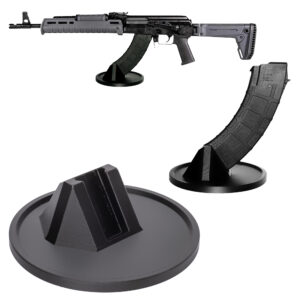
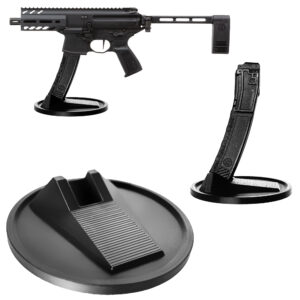
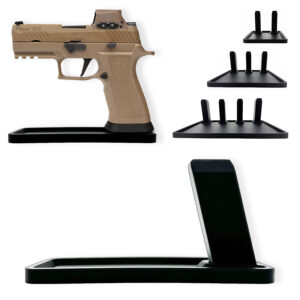


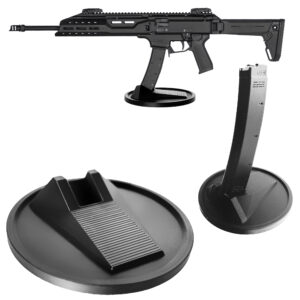
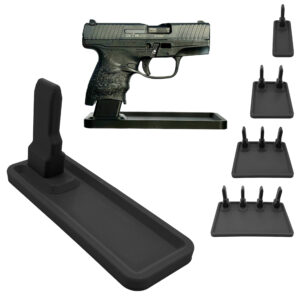

Colt
Colt M4 Carbine
Colt LE6920
Colt AR-15 A4
Daniel Defense
DDM4 V7
DDM4 V9
DDM4 V11
DDM4 ISR (Integrally Suppressed Rifle)
Smith & Wesson (S&W)
M&P15 Sport II
M&P15 Tactical
M&P15T
Bravo Company Manufacturing (BCM)
BCM Recce-16
BCM Recce-14
BCM MCMR Series
Aero Precision
M4E1 Series
AC-15
AR15 Pistol (Various Configurations)
Ruger
Ruger AR-556
Ruger SR-556
Ruger AR-556 MPR (Multi-Purpose Rifle)
Springfield Armory
Saint Victor
Saint Edge
Saint AR-15
PSA (Palmetto State Armory)
PSA PA-15
PSA AR-V
PSA Jakl (AR Pistol)
FN America
FN 15 Tactical Carbine
FN 15 Patrol
FN 15 DMR
Wilson Combat
Recon Tactical
Super Sniper
Protector Carbine
SIG Sauer
SIG M400 Tread
SIG M400 Elite
SIG M400 SDI
LWRC International
IC DI (Direct Impingement)
IC SPR
IC A5
Bushmaster Guns
XM-15 QRC
Bushmaster MOE
XM-15 Patrolman
Rock River Arms
LAR-15 Entry Tactical
LAR-15 Predator
LAR-15 Elite Comp
Stag Arms
Stag 15 Tactical
Stag 15L (Left-Handed Models)
Stag 15 Valkyrie
Noveske Rifleworks
Noveske Gen 4 N4
Noveske Space Invader (AR Pistol)
Noveske Recon
Anderson Manufacturing
AM-15 Optic Ready
AM-15 M4 Carbine
AM-15 Precision Rifle
Adams Arms
AA-15 Piston Rifle
P2 AARS (Adams Arms Rifle Series)
Black Rain Ordnance
SPEC15 Series
BRO Predator
Fallout 15
Diamondback Guns
DB15 Series
DB15CCMLB
DB15EB
Del-Ton Inc.
DTI-15
Del-Ton Echo 316H
Sierra 316M
Windham Weaponry
Windham SRC
Windham VEX-SS
Windham RMCS-4 (Caliber Conversion System)
Christensen Arms
CA-15 G2
CA-15 Recon
CA-15 Titanium Edition
Patriot Ordnance Factory (POF-USA)
Renegade Plus
P415 Edge
Revolution DI
LaRue Tactical
PredatAR
OBR (Optimized Battle Rifle)
LaRue Stealth 2.0
Battle Arms Development
Workhorse Patrol Carbine
BAD556-LW (Lightweight)
Authority Elite Rifle
Faxon Guns
Ascent AR-15
FX-19 (AR Pistol)
Streamline Ultralight Series
KE Arms
KE-15 SLT (Super Lightweight Tactical)
KE-15 Scout Carbine
Primary Weapons Systems (PWS)
MK1 MOD 2-M
MK116 PRO
MK107 (Piston AR Pistol)
ZEV Technologies
ZEV Core Elite Rifle
ZEV AR15 Billet Rifles
Franklin Armory
BFSIII AR-C1
Militia Model
F17-L (Chambered in .17 WSM)
Seekins Precision
SP15 DMR
NX15 Skeletonized Rifle
Havak Bravo
Aero Precision (Additional Models)
EPC-9 (Pistol Caliber ARs)
VG6 AR Rifles
Barrett Guns
REC7 DI
REC7 Gen II
CMMG
MK4 RCE
Resolute 300
Banshee (AR Pistol)
DPMS Panther Arms
Panther Oracle
Panther LR-308
H&K (Heckler & Koch)
HK MR556A1
HK416 (Military Variant)
Rock Island Armory (Armscor)
VR-80 Tactical AR (Shotgun AR Platform)
Troy Industries
Troy SPC-A3
Troy PAR (Pump Action AR)
Wilson Tactical
Tactical Recon AR
Protector Series
F1 Guns
FDR-15 Skeletonized Rifle
BDRx-15 Series
Juggernaut Tactical
JT-15
JT-10 Precision Rifle
AeroSurplus
Surplus AR-15 Rifles (Budget Models)
Thunder Tactical
AR-15 Basic Carbine
Tactical Builder Sets
Radical Guns
RF-15
Forged AR-Series
Dark Storm Industries
DS-15 Featureless Rifles
DS-10 Typhoon
DRD Tactical
Paratus
Aptus AR Rifles
Bear Creek Arsenal
BCA-15
AR Complete Upper Builds
Aero Survival Rifles (ASI)
ASR Tactical Series
Tactical Edge
WARFIGHTER Series
AR-15 Lightweight Rifles
Lone Star Armory
TX15 DMR
TX15 Carbine
HERA Arms
HERA H7
HERA AR-15 Lower Builds
IWI (Israeli Weapon Industries)
Zion-15
DRD Tactical
Tactical Modular Rifles
Quick-Takedown Rifles
V Seven Weapons
1776 Rifle
Hyperlite Rifle
Core Rifle Systems
Core15 Tac III
Core15 Patrol Rifle
Armalite (Original AR-15 Creator)
M15 Tactical
M15 A4 Carbine
DEF15 (Defensive Sporting Rifle Series)
PSA (Palmetto State Armory Additional Models)
PSAK-47 Hybrid (AR-AK Style Hybrid)
PSA Dagger (Pistol Caliber Configurations)
Odin Works
OTR-15
Odin Recon Rifle
Maxim Defense
MDX-508 PDX (Compact AR Pistol)
MDX-510 Rifle